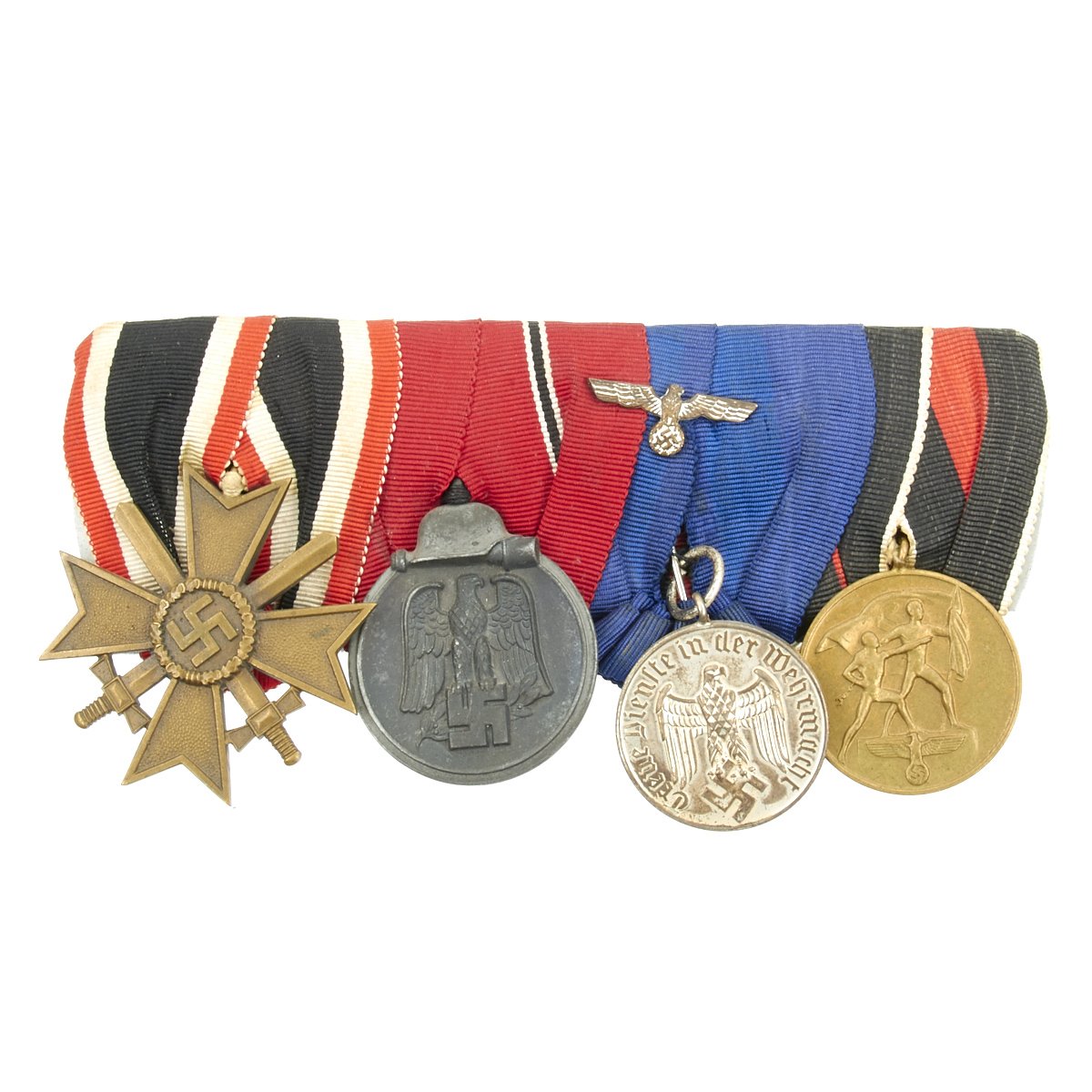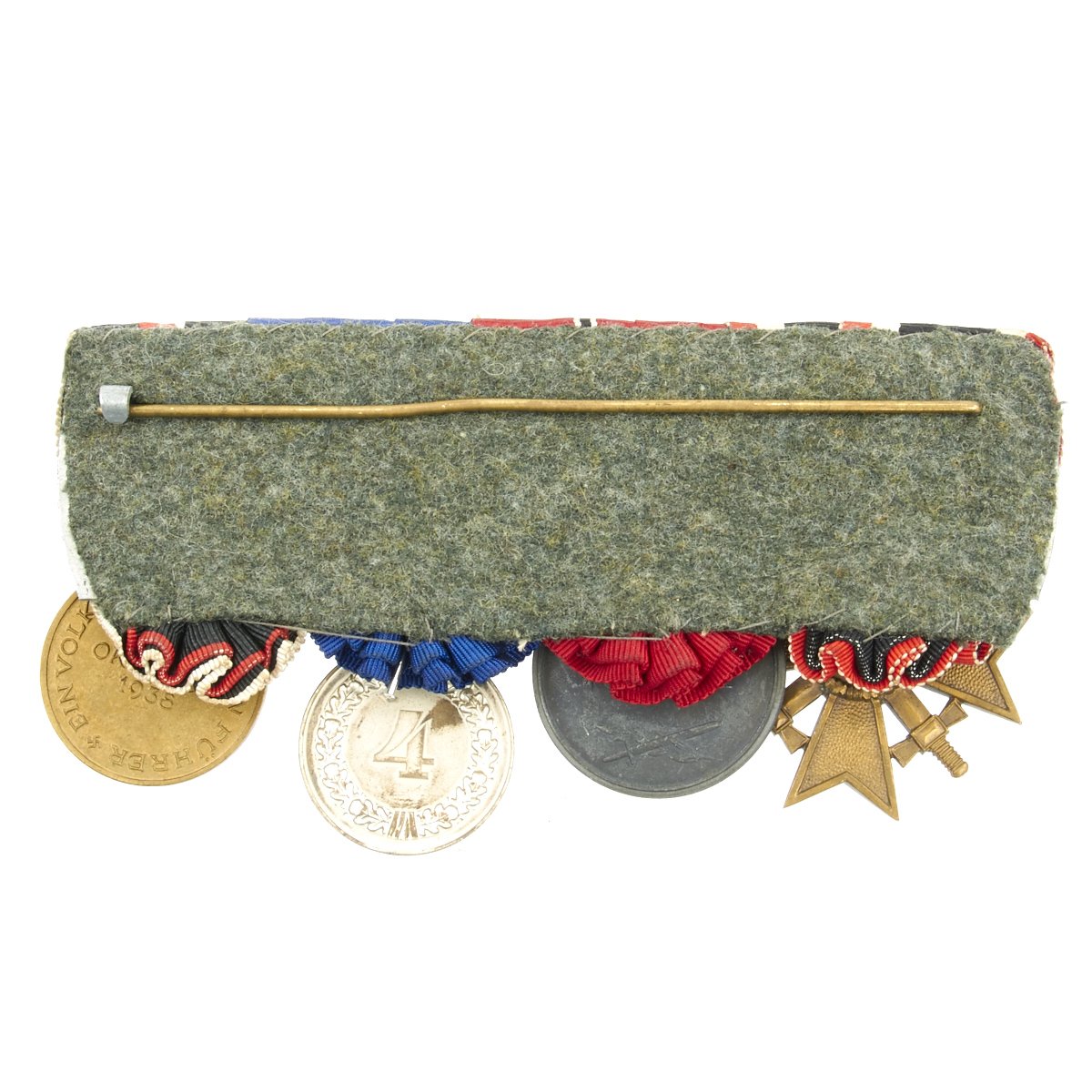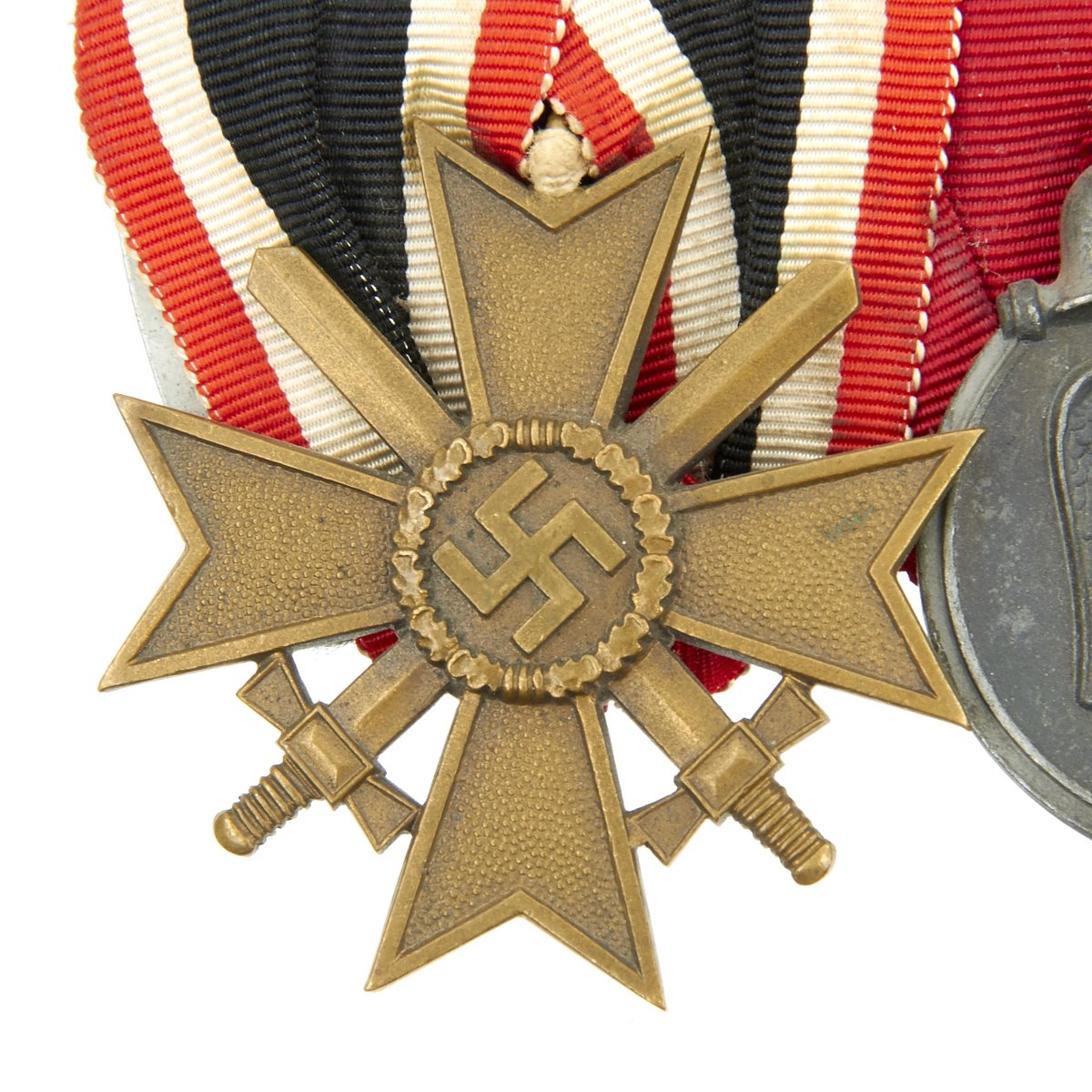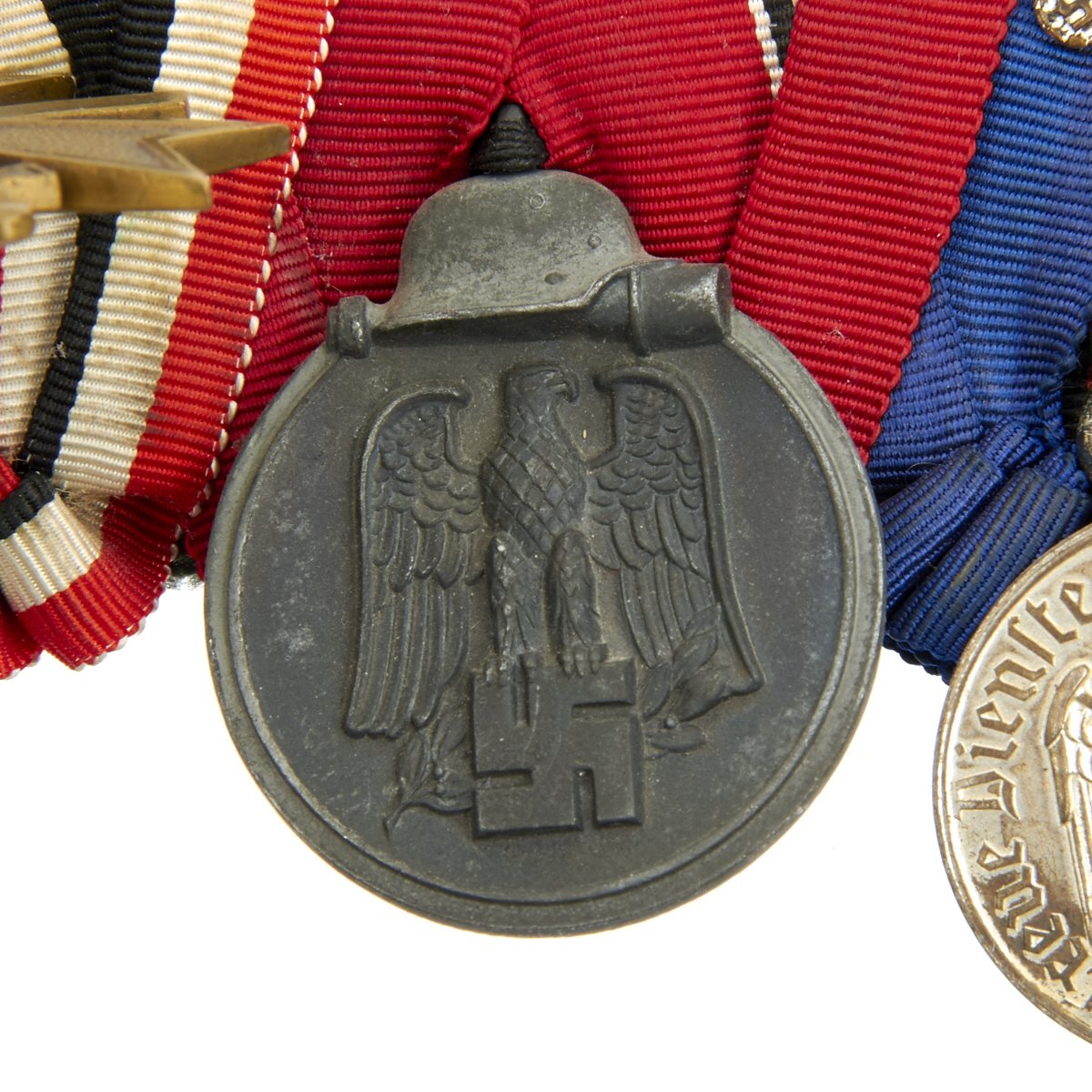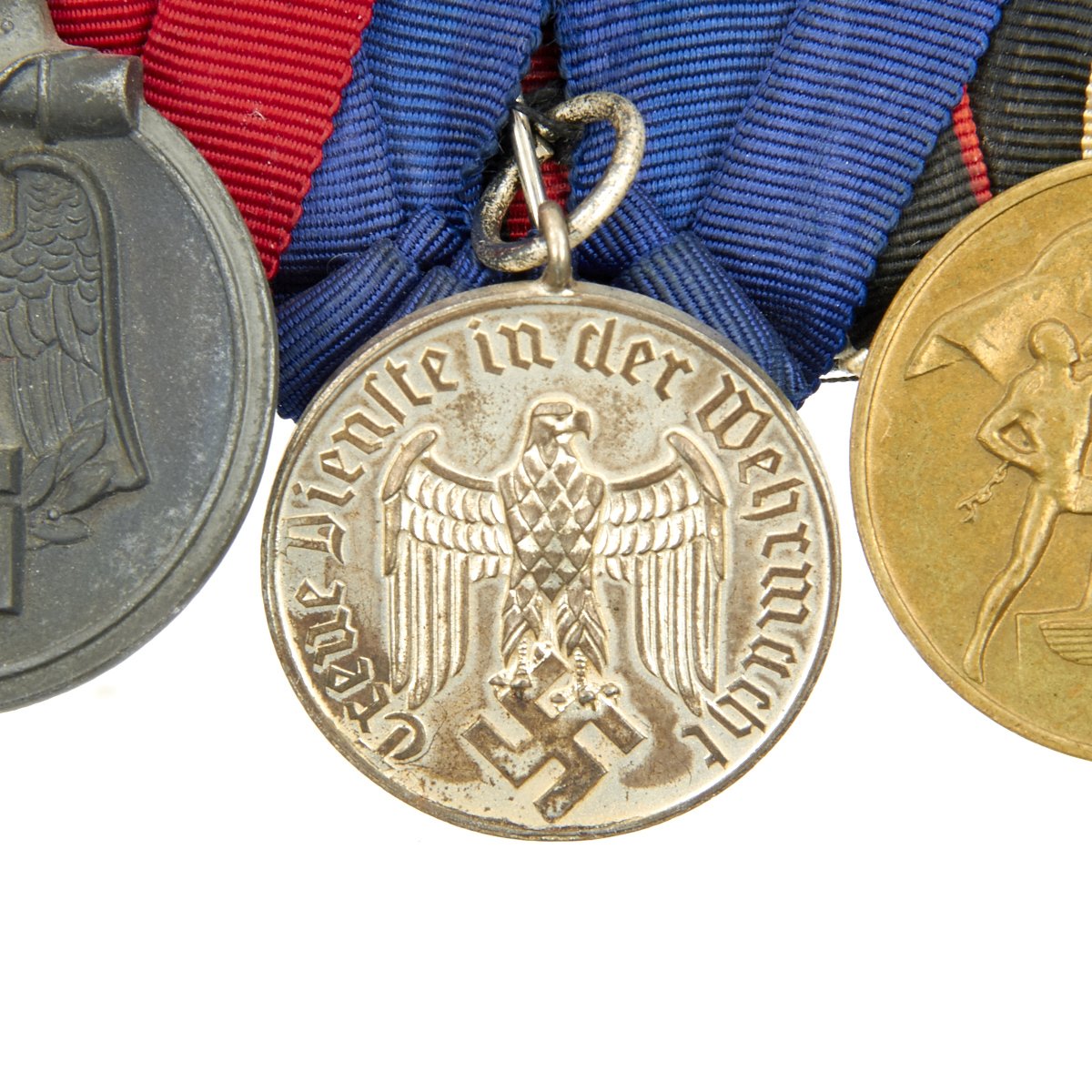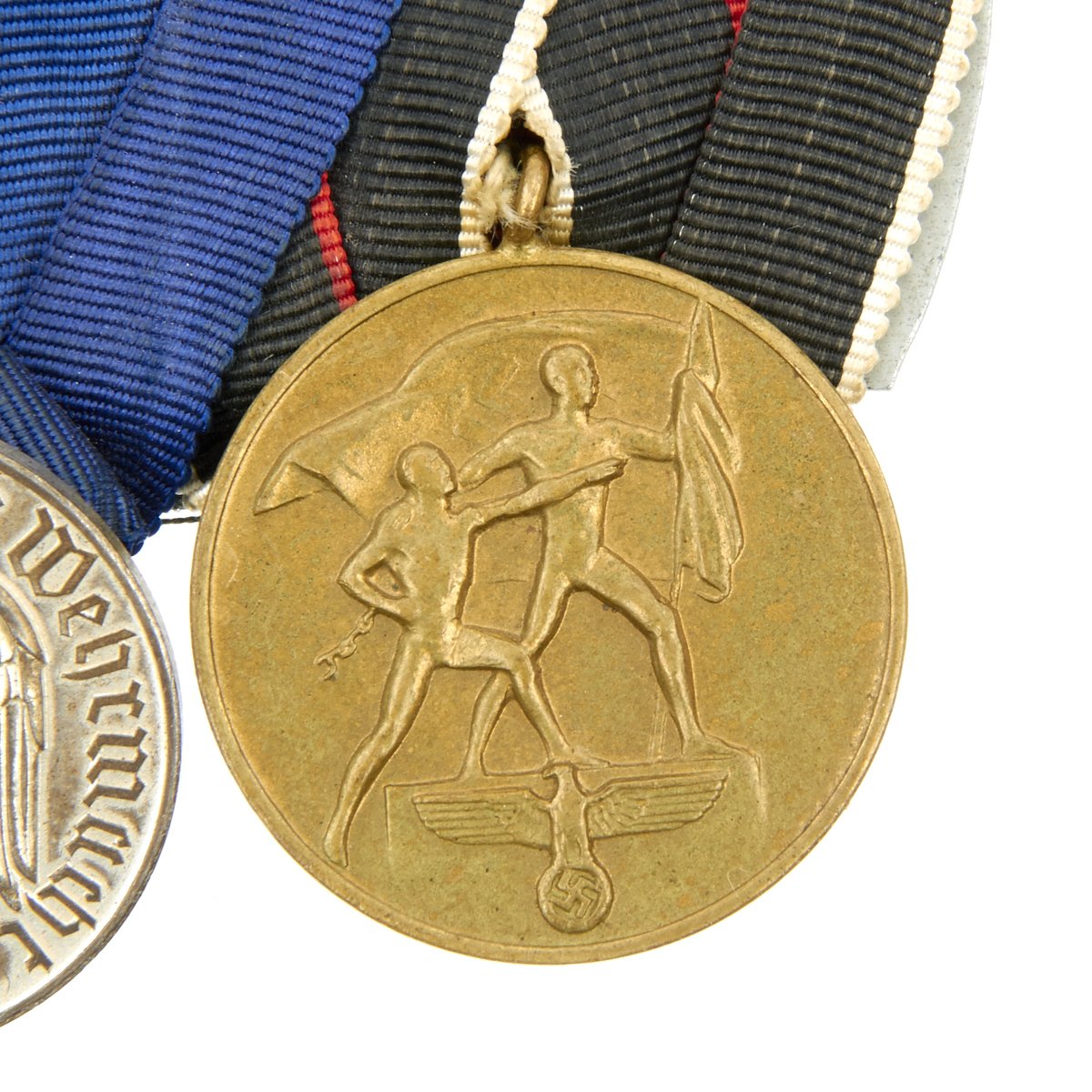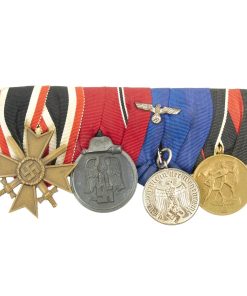Original German WWII Eastern Front Officer Medal Bar – 4 Awards Original Items
$ 395,00 $ 118,50
Original Item: One-of-a-kind. This is a very nice genuine medal bar removed from the uniform of a fallen or captured German officer who served on the Eastern Front during WWII
The set of 4 medals offered in good condition is mounted on a backing board lined in uniform wool and consists of the following medals:
- German WWII War Merit Cross with Swords
– German WWII Eastern Front Medal
– German WWII Heer (Army) 4-Year Long Service Award
– German WWII Sudetenland Medal (Czech Conquest)
Below is an explanation of each medal in detail:
The War Merit Cross (Kriegsverdienstkreuz) was a decoration of NSDAP Germany during the Second World War, which could be awarded to military personnel and civilians alike. By the end of the war it was issued in four degrees, and had a related civil decoration. It was created by Adolf AH in October 1939 as a successor to the non-combatant Iron Cross which was used in earlier wars. The award was graded the same as the Iron Cross: War Merit Cross Second Class, War Merit Cross First Class, and Knights Cross of the War Merit Cross. The award had two variants: with swords given to soldiers for exceptional service “not in direct connection with combat”, and without swords for meritorious service to civilians in “furtherance of the war effort”. As with the Iron Cross, Recipients had to have the lower grade of the award before getting the next level.
The Eastern Front Medal (German: Medaille „Winterschlacht im Osten 1941/42“) was a World War II German military decoration awarded to both German and Axis personnel. It was awarded to those who served on the German Eastern Front during the winter campaign period of 15 November 1941 to 15 April 1942. It was instituted on 26 May 1942 and was commonly known as the Ostmedaille (East Medal)[1] or Russian Front Medal. The medal was wryly called the Frozen Meat Medal or the “Order of the Frozen Flesh” (German: Gefrierfleischorden) by Heer, Luftwaffe and Waffen-SS personnel to whom it was awarded.
German WWII Heer (Army) 4-Year Long Service Award. German “Dienstauszeichnung IV. Klasse für 4 Dienstjahre); circular silvered metal (magnetic); on loop for suspension; the obverse with the German eagle in the centre, circumscribed in German Gothic lettering “Treue Dienste in der Wehrmacht” (Faithful Service in the Armed Forces); the reverse with the raised number “4” centrally within an oak wreath border.
The 1 October 1938 Commemorative Medal (German: Die Medaille zur Erinnerung an den 1. Oktober 1938), commonly known as the Sudetenland Medal was a decoration of NSDAP Germany awarded in the interwar period.
Instituted on 18 October 1938, the medal was awarded to German military personnel who participated in the occupation of Sudetenland and the occupation of Czechoslovakia in March 1939.
The medal was awarded to all German (and as well Sudeten) State officials and members of the German Wehrmacht and SS who marched into Sudetenland. Later it was awarded to military personnel participating in the occupation of the remnants of Czechoslovakia on 15 March 1939. It was awarded until 31 December 1940. In all 1,162,617 medals and 134,563 bars were awarded.
The medal was similar in appearance as the Anschluss Medal, the reverse only differed in the date. It was designed by Professor Richard Klein.
It is round and of the obverse there is a man standing of a podium with the Third Reich coat of arms and holding the NSDAP flag, he holding the hand and helping him get on the podium of another man who had a broken shackle on his right hand, this symbolize the joining to the Reich of Austria. On the reverse side is the inscription “1. Oktober 1938” (1 October 1938). The date is surrounded with the words “Ein Volk, Ein Reich, Ein Führer” (One People, One Empire, One Leader).
The medal was dye-struck and high in detail, with a bronze finish. The medal was suspended from a black ribbon with a red stripe in the middle, these being the colors of the Sudetenland.
Fast Shipping with Professional Packaging
Thanks to our longstanding association with UPS FedEx DHL, and other major international carriers, we are able to provide a range of shipping options. Our warehouse staff is expertly trained and will wrap your products according to our exact and precise specifications. Prior to shipping, your goods will be thoroughly examined and securely secured. We ship to thousands clients each day across multiple countries. This shows how we're dedicated to be the largest retailer on the internet. Warehouses and distribution centres can be located throughout Europe as well as the USA.
Note: Orders with more than one item will be assigned a processing date depending on the item.
Before shipping before shipping, we'll conduct a thorough inspection of the items you have ordered. Today, the majority of orders will be delivered within 48 hours. The delivery time will be between 3-7 days.
Returns
The stock is dynamic and we cannot completely manage it because multiple stakeholders are involved, including our factory and warehouse. So the actual stock may alter at any time. It's possible that you may not receive your order once the order has been made.
Our policy is valid for a period of 30 days. If you don't receive the product within 30 days, we are not able to issue a refund or an exchange.
You can only return an item if it is unused and in the same state as the day you received it. You must have the item in its original packaging.
Related products
Uncategorized
Armored Burgonet Helmet & Polearm from Scottish Castle Leith Hall Circa 1700 Original Items
Uncategorized
Uncategorized
Uncategorized
Uncategorized
Uncategorized
Uncategorized
Uncategorized
Uncategorized
Uncategorized
Uncategorized
Uncategorized
Australian WWII Owen MK1 Machine Carbine SMG Custom Fabricated Replica with Sling Original Items
Uncategorized
Uncategorized
Uncategorized
Uncategorized
Uncategorized
Uncategorized
Armoured Fighting Vehicles of the World: AFVs of World War One (Hardcover Book) New Made Items
Uncategorized
